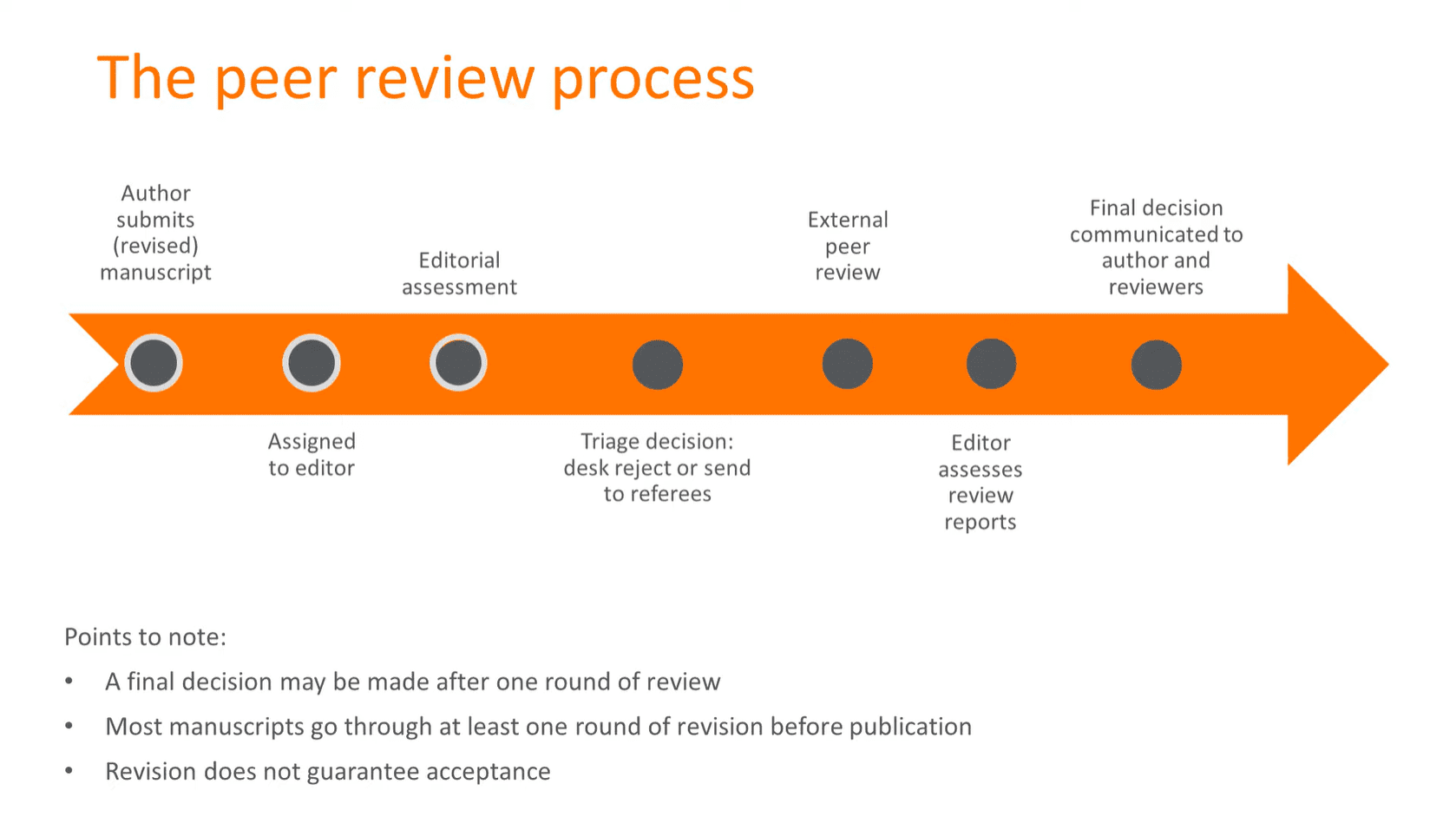
The peer review process typically involves several key steps to ensure that scholarly work meets academic standards. Here's an overview of the peer review process as outlined by Elsevier:
The author submits their manuscript to a journal for publication consideration.
A journal editor is assigned the submitted manuscript to carry out the next phase of the review process.
The assigned editor assesses the manuscript to confirm it meets the journal's basic requirements (e.g., formatting, journal scope, quality, completion).
After the editor's initial assessment, the editor will take one of two actions:
The editor invites at least two peer reviewers who are experts in the manuscript's subject area. These reviewers can be academics or professionals with relevant experience. Each reviewer will produce a detailed report to provide to the editor, containing their opinions of the manuscript along with their recommendations.
Based on the reviewers' feedback, the editor makes one of the following decisions:
The editor communicates their decision to the author and reviewers. Accepted articles move forward for publishing in a future journal issue.
Want to learn more about the peer review process? Visit Elsevier’s comprehensive overview of peer review that includes its background, process, types of peer review and resources.
Interested in becoming a peer reviewer for SLAS? Fill out our interest form and we'll contact you to discuss your interest.